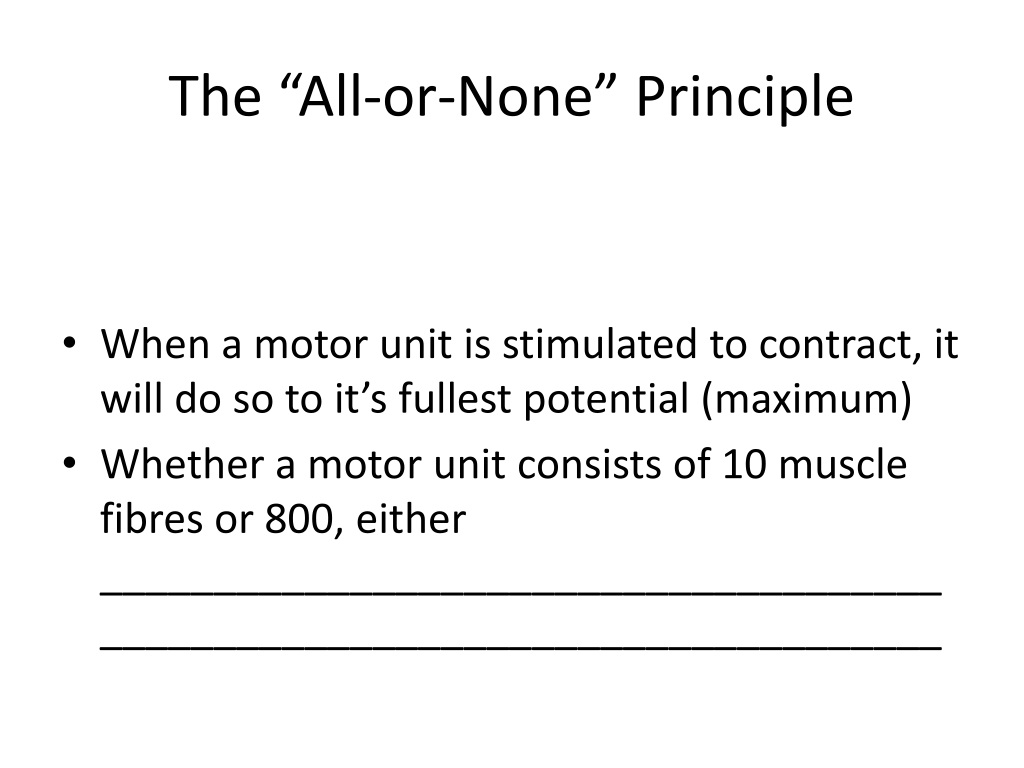

A stronger stimulus will generally cause a cell to fire faster than a weaker stimulus will.Ĭarlson, N. Neurons, however, can provide information about the strength of a stimulus by altering the rate at which they generate action potentials. (4) Similarly, with a smaller light source, a given region usually receives either all or none of. (2) The guarantee of atomicity means that either all or none of these operations will occur, hence ensuring overall data integrity. A weaker stimulus will not produce a weaker neural impulse. (1) This is a combined offer on all or none basis. Neurons follow an all-or-none principle, meaning that either the neuron fires an action potential or it does not fire one.

At the synapse, the action potential triggers the release of the neurotransmitter substance to affect postsynaptic cells. The action potential originates near the soma and once it starts, it travels down the entire length of the axon until it reaches the terminal buttons. At the peak of the action potential, the inside of the axon becomes less negative (or even positive), and potassium ions are driven out of the cell while positively charged sodium ions rush in. The relationship between the level of stimulation and the production of a neural impulse is called the all or none principle. An action potential results from brief changes in the membrane's permeability to sodium and potassium ions. Stimulation of sufficient intensity alters the permeability of the cell membrane. all-or-none response Source: A Dictionary of Biology Author(s): Elizabeth MartinElizabeth Martin, Robert HineRobert Hine. Athabasca University Athabasca University Psychology Glossary of Termsīrief, localised, transient change in the neuron's voltage, providing the basis for the conduction of information along an axon.


 0 kommentar(er)
0 kommentar(er)
